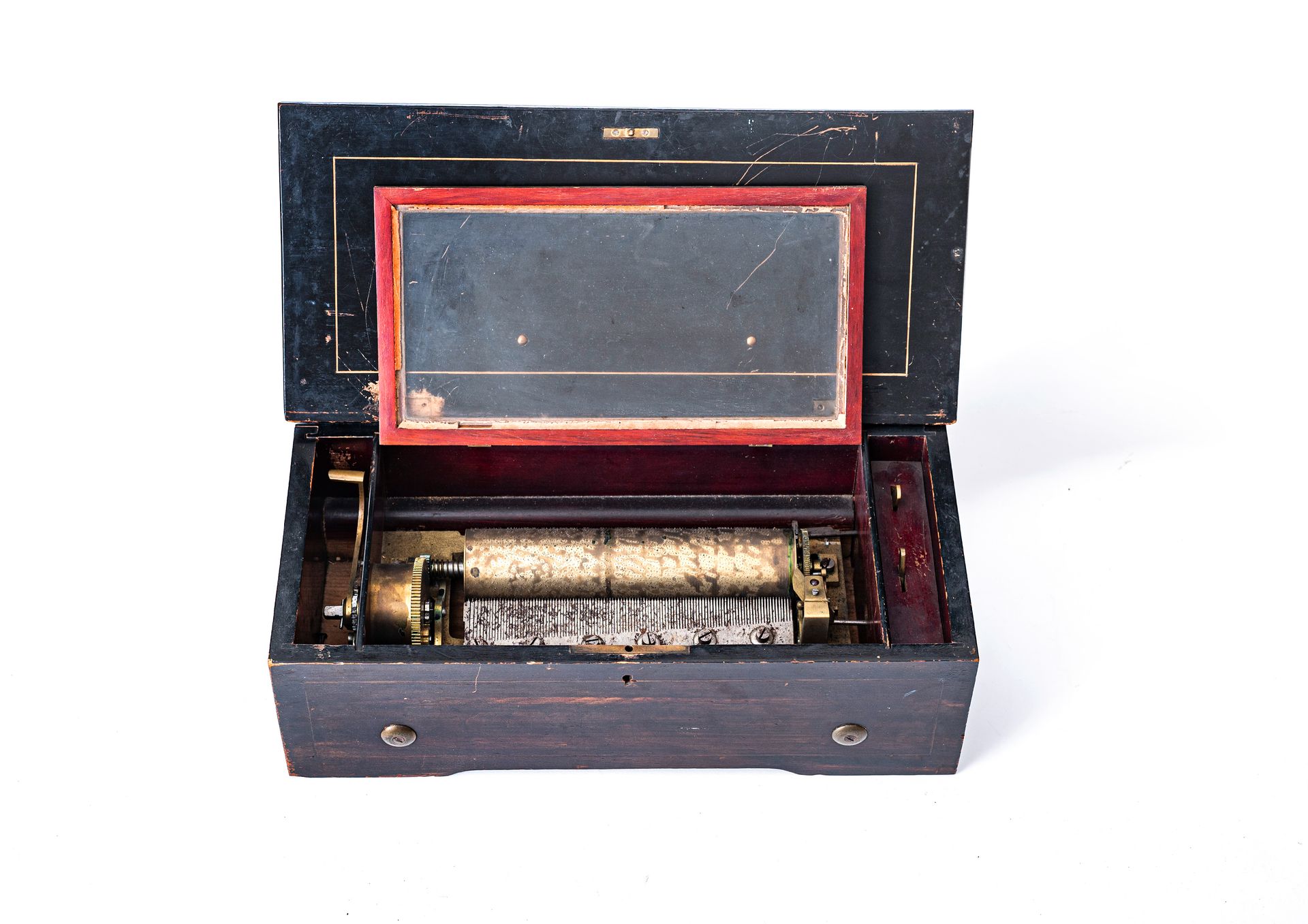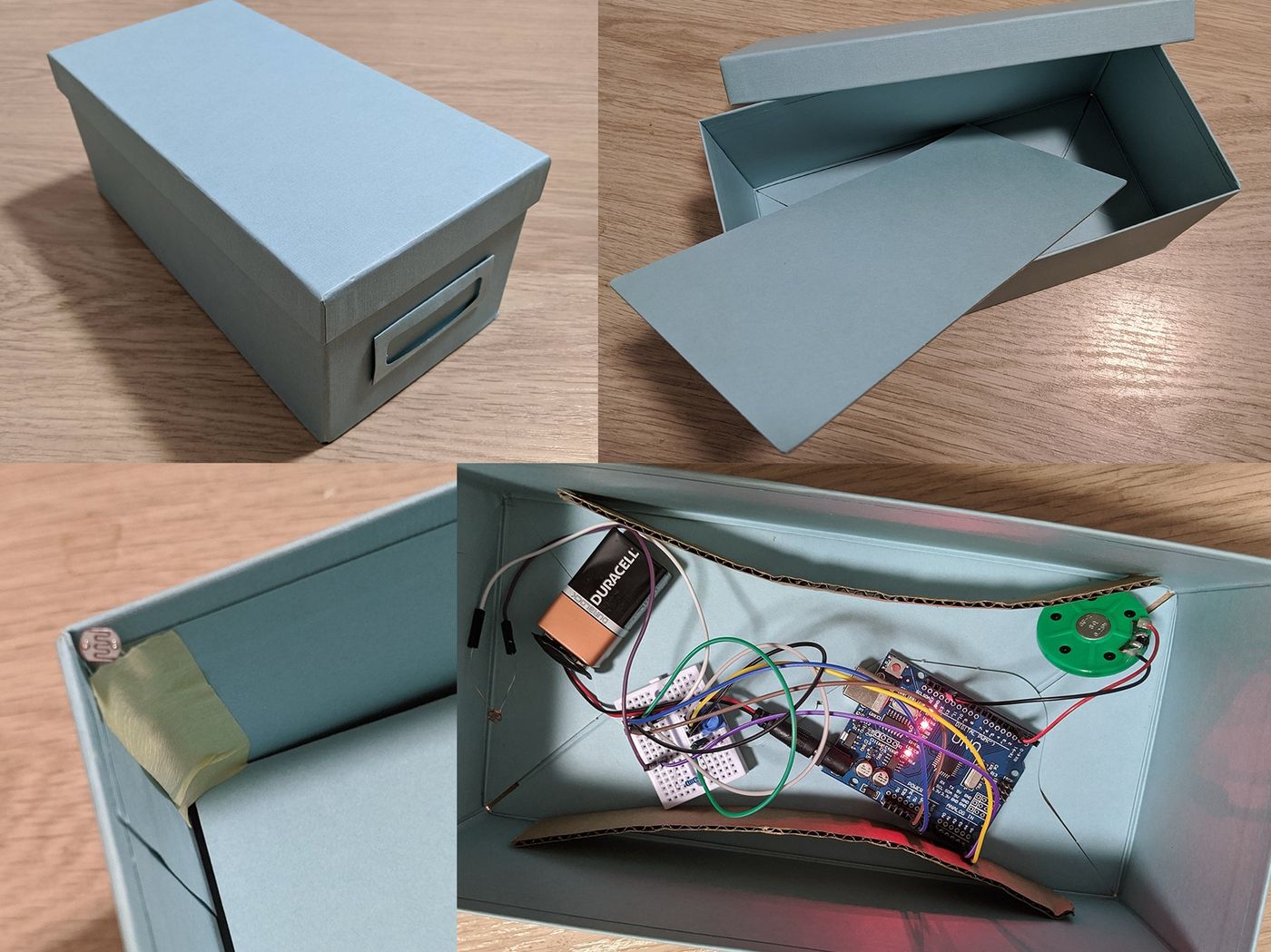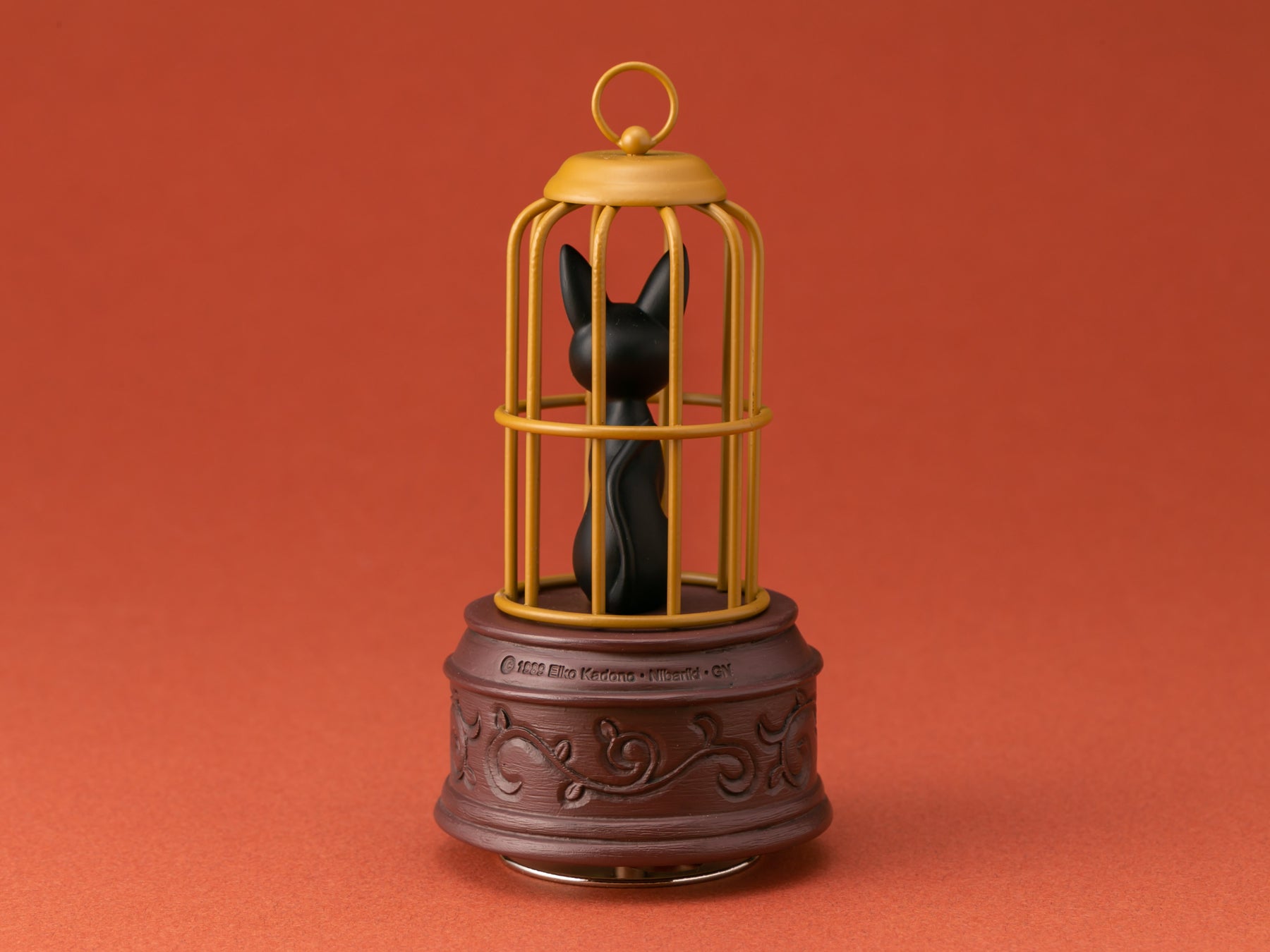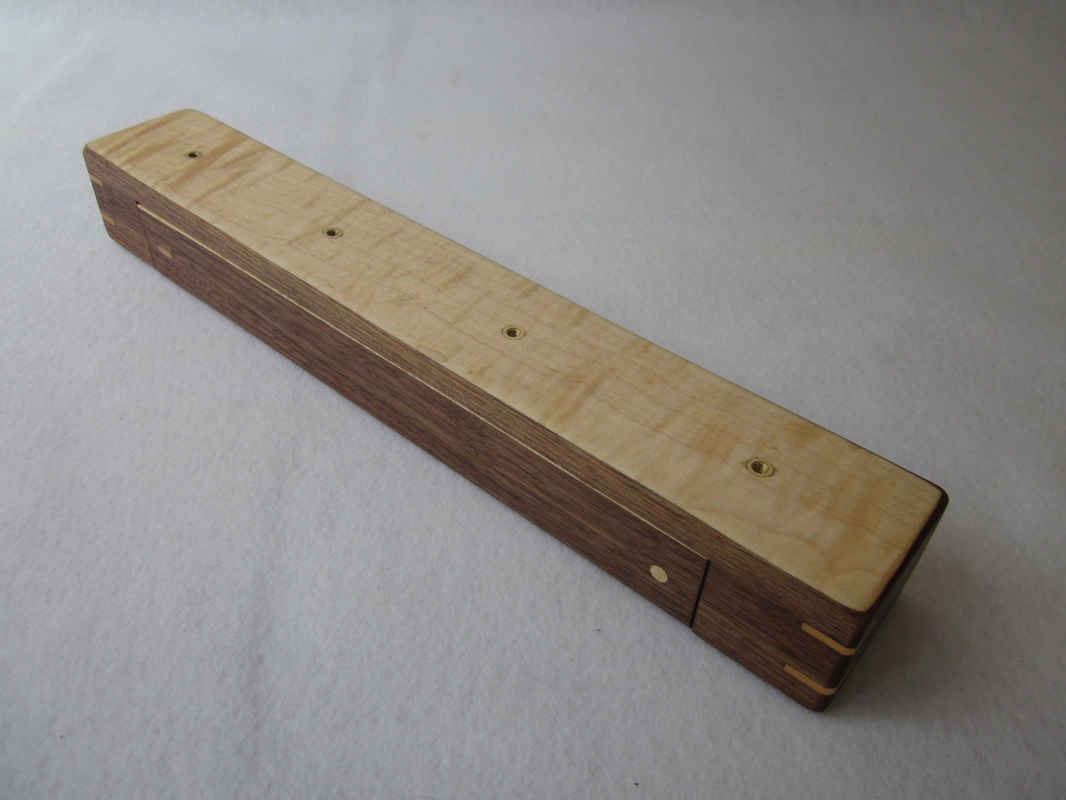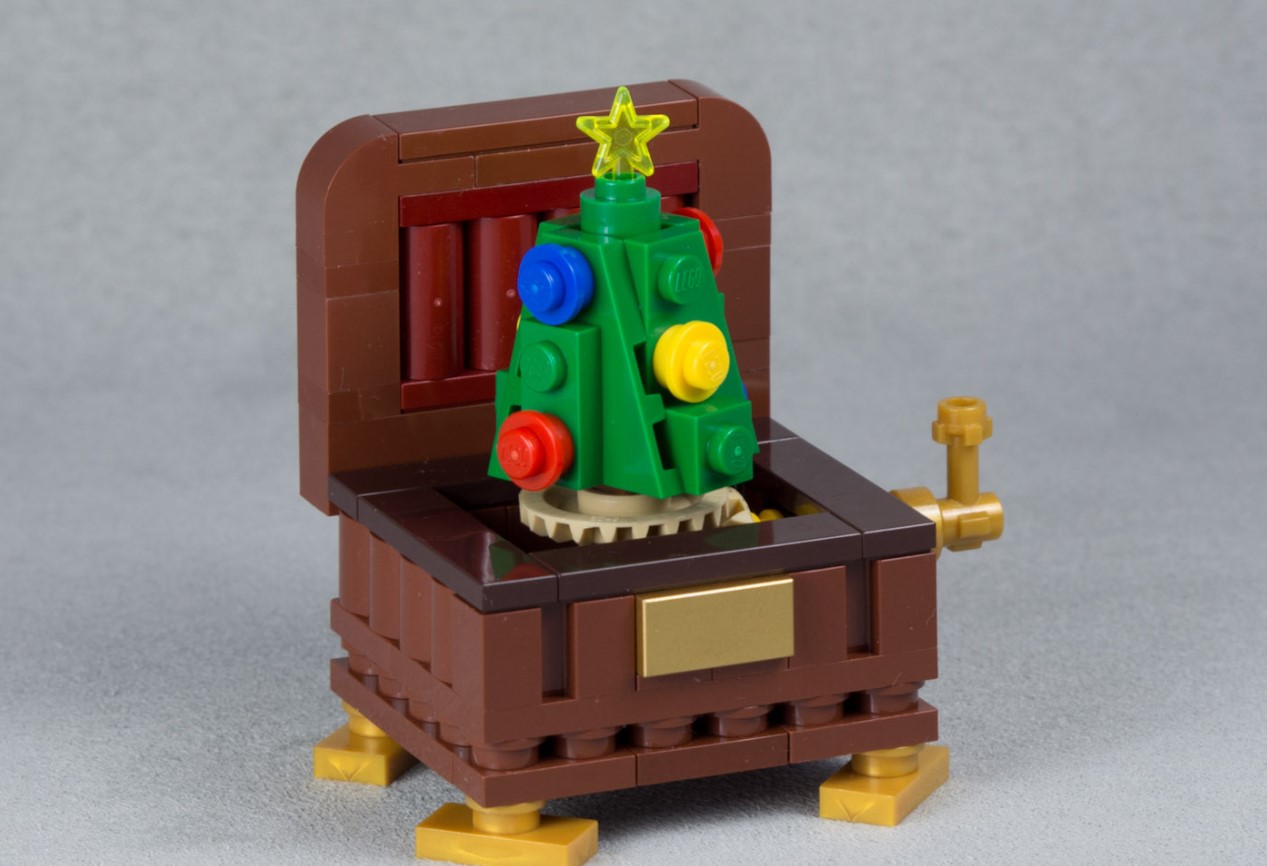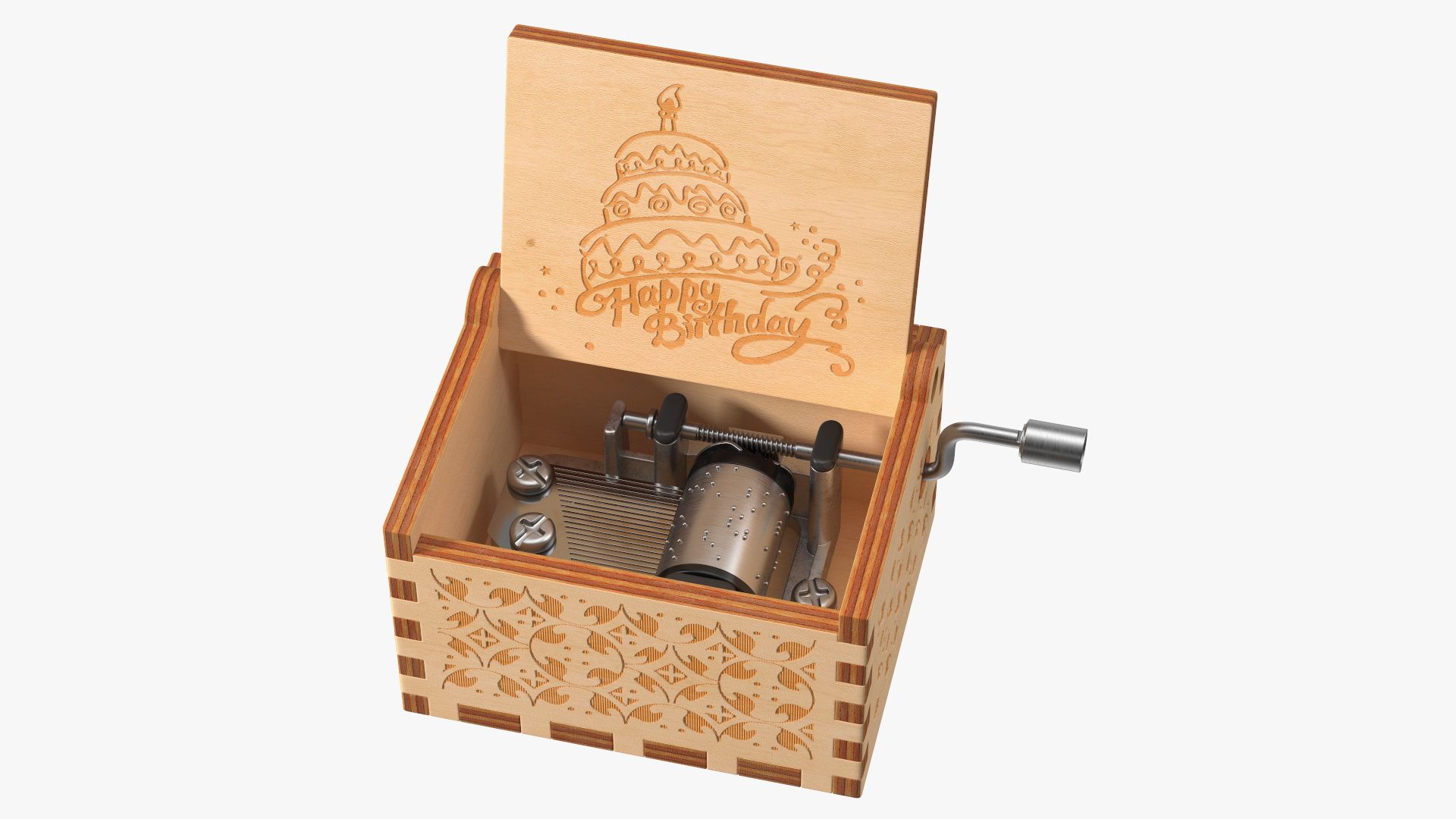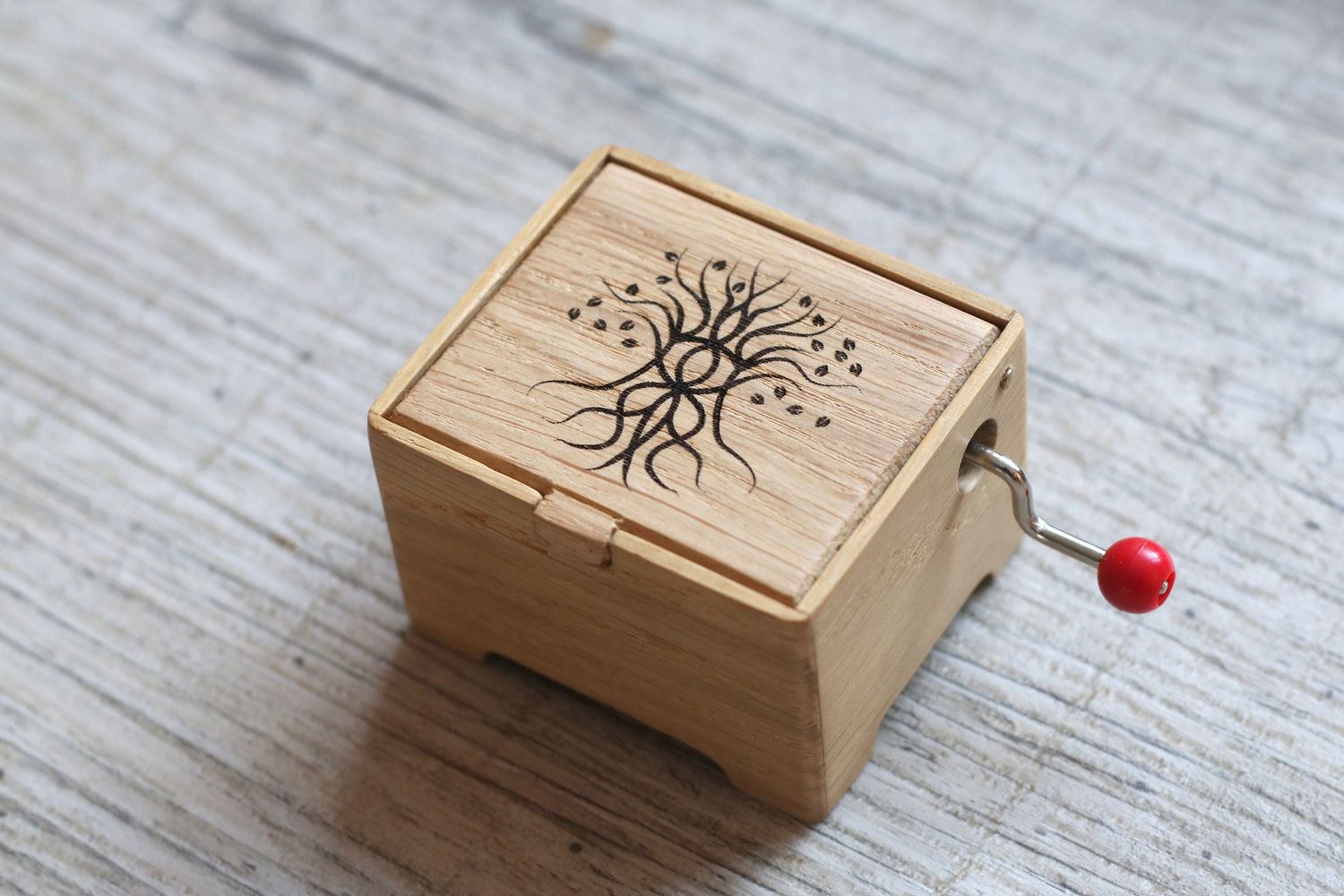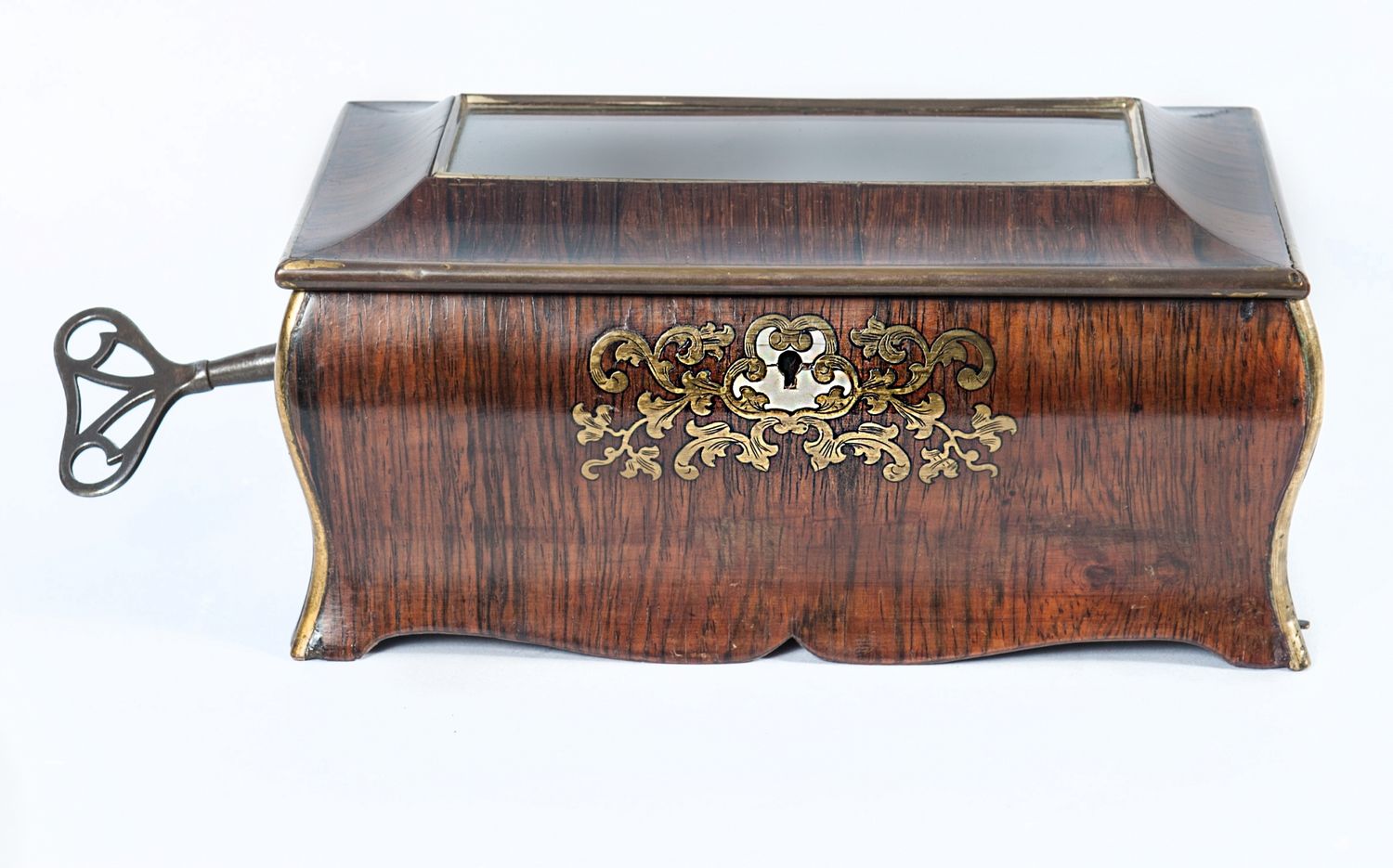Home>Devices & Equipment>Music Box>How To Make Songs Into Music Box Version


Music Box
How To Make Songs Into Music Box Version
Published: January 11, 2024
Learn how to transform your favorite songs into enchanting music box versions with this comprehensive guide. Discover the magic of music box melodies.
(Many of the links in this article redirect to a specific reviewed product. Your purchase of these products through affiliate links helps to generate commission for AudioLover.com, at no extra cost. Learn more)
Table of Contents
- Introduction
- Step 1: Choosing a Song
- Step 2: Transcribing the Melody
- Step 3: Selecting the Appropriate Music Box
- Step 4: Adjusting the Melody for Music Box
- Step 5: Creating the Music Box Arrangement
- Step 6: Transferring the Arrangement to the Music Box
- Step 7: Testing and Fine-tuning the Music Box Version
- Conclusion
Introduction
Music boxes have always held a special place in our hearts, evoking a sense of nostalgia and charm. These delicate creations produce enchanting melodies that can instantly transport us to a different time or place. While music boxes traditionally play pre-composed tunes, there is a growing trend of transforming popular songs into music box versions. This allows for a unique and personalized touch while preserving the magical essence of the music box.
In this article, we will explore the steps involved in making songs into music box versions. Whether you’re a musician looking to create a unique rendition of your own composition or a music box enthusiast eager to bring your favorite songs to life on the delicate sound of a music box, this guide will walk you through the process to help you achieve your desired results.
From selecting the right song to transcribing the melody and creating a music box arrangement, each step requires careful attention to detail. We will provide helpful tips and techniques to ensure a successful transformation of any song into a captivating music box version. So, let’s dive in and unlock the secrets to creating your very own music box masterpiece!
Step 1: Choosing a Song
The first step in making a song into a music box version is selecting the right song. Choose a song that holds personal meaning to you or resonates with your intended audience. It could be a favorite song, a popular tune, or a melody that you believe will sound delightful when played on a music box.
Consider the mood and emotion of the song. Music boxes have a limited range of notes, so it’s important to choose a melody that translates well to this unique instrument. Songs with simple, catchy melodies are often ideal for music box arrangements. Look for songs that have a distinct and recognizable melody that can be easily transcribed and replicated on a music box.
Another factor to consider is the length of the song. Music boxes have a limited playtime, usually ranging from 15 to 30 seconds. Therefore, shorter songs or sections of longer songs that can be condensed into a music box arrangement work best. This allows for a complete and satisfying rendition within the limited playtime of the music box.
Additionally, take into account the musical complexity of the song. Intricate harmonies or fast-paced melodies may not translate well to the simplicity of a music box. Opt for songs with a straightforward melody that can be easily adapted to suit the limited number of notes that a music box can play.
Lastly, consider your own musical taste and style. Choose a song that you genuinely enjoy and feel connected to. This enthusiasm will shine through in your arrangement and make the process even more enjoyable.
By following these guidelines and carefully selecting the right song, you are setting a strong foundation for creating a captivating music box version that will bring joy to you and those who listen to it.
Step 2: Transcribing the Melody
Once you have chosen a song, the next step is to transcribe the melody. Transcribing involves notating the melody in a format that can be easily translated to the limited number of notes available on a music box.
Start by listening closely to the song and identifying the main melody. Pay attention to the pitch, rhythm, and timing of each note. You can use musical notation software or paper and pencil to write down the melody. If you’re not familiar with musical notation, you can use a simplified approach by using numbers to represent the pitches of the notes.
Music boxes typically have a set number of notes, usually ranging from 10 to 30. Take note of the available notes on your music box to ensure that the melody can be accurately transcribed. If your song contains notes outside the range of your music box, you may need to make adjustments or find an alternative melody that fits within the limitations of the instrument.
Keep in mind that music boxes have a mechanical nature, with each note played by a metal pin striking a metal comb. This means that sustained or legato notes may not be possible to replicate exactly. Focus on capturing the essence of the melody rather than trying to replicate every nuance of the original recording.
As you transcribe the melody, experiment with different octave placements to find the best fit for the music box. Remember that music boxes often have a limited range, so you may need to simplify or modify the melody to fit within the available notes.
Once you have transcribed the melody, play it back on your chosen instrument or software to ensure accuracy. Make any necessary adjustments to ensure a faithful representation of the song’s melody. Remember, the goal is to capture the essence of the song and create a recognizable music box version.
Transcribing the melody is a crucial step in creating a music box version of a song. With careful attention to detail and a focus on capturing the essence of the original melody, you will be well on your way to transforming the song into a delightful music box arrangement.
Step 3: Selecting the Appropriate Music Box
Once you have transcribed the melody of your chosen song, the next step is to select the appropriate music box. There are various types of music boxes available, each with its own unique sound and features. It’s important to choose a music box that will complement the melody and bring out the desired charm of the arrangement.
Consider the size and type of music box that would be best suited for your project. Music boxes come in different shapes and sizes, ranging from small handheld boxes to larger tabletop models. The size of the music box will determine the available number of notes and the overall sound quality. Smaller music boxes generally have fewer notes and a more delicate sound, while larger ones can produce a fuller and richer tone.
Next, consider the mechanism of the music box. Traditional music boxes use a metal comb and pins to produce sound, while more modern versions may utilize electronic or digital mechanisms. Each type of mechanism produces a different sound, so choose one that aligns with the aesthetic and mood you want to achieve for your music box version.
When selecting a music box, pay attention to the overall craftsmanship and quality. Look for well-made music boxes with sturdy mechanisms and durable materials. This ensures that your music box will produce clear and consistent notes, enhancing the overall listening experience.
Additionally, some music boxes come with customizable features such as interchangeable cylinders or adjustable speeds. These features allow for greater flexibility in creating your music box arrangement and adding unique touches to the final version.
Consider your budget when selecting a music box as well. Music boxes can range in price depending on their quality and craftsmanship. Determine your budget and explore options within that range to find a music box that meets your needs and preferences.
Overall, selecting the appropriate music box is a crucial step in creating a captivating music box version of a song. By considering factors such as size, mechanism, craftsmanship, and budget, you will be able to find a music box that complements the melody and brings your arrangement to life in a delightful and enchanting way.
Step 4: Adjusting the Melody for Music Box
After selecting the appropriate music box, the next step is to adjust the melody of the song to fit the limitations and characteristics of the instrument. Music boxes have a limited range of notes and a distinct sound that differs from other musical instruments. Therefore, it’s important to make necessary adjustments to ensure the melody translates well to the unique nature of the music box.
Start by reviewing the melody that you transcribed in the previous step. Assess if any notes fall outside the range of your music box. If so, you will need to adjust the melody by either raising or lowering the notes to fit within the available range. This could involve transposing the melody to a different key or rearranging certain sections to accommodate the limited notes of the music box.
Consider the tempo of the song as well. Music boxes have a fixed speed, so if the original tempo of the song is too fast or too slow for the music box, you may need to make adjustments. Experiment with playing the melody at different speeds to find a tempo that works best for the music box arrangement.
Another aspect to consider is the dynamics of the melody. Music boxes have a characteristic soft and delicate sound, so it’s important to adjust the dynamics of the melody accordingly. You may need to simplify any accents or dynamic variations in the original melody to ensure they translate well to the music box.
Listen to the adjusted melody on your chosen music box to ensure that it sounds coherent and pleasing. Make any necessary tweaks or modifications to the melody to optimize its playability and to capture the unique charm of the music box sound.
Remember, the goal is to create a music box version of the song that is recognizable and enjoyable on its own merit. Adjusting the melody to fit the limitations of the music box is a crucial step in achieving this, ensuring that the arrangement sounds harmonious and captivating.
Step 5: Creating the Music Box Arrangement
With the adjusted melody in hand, it’s time to create the music box arrangement. This step involves translating the melody into a format that can be played on the music box and arranging it in a way that captures the essence of the song.
Start by breaking down the melody into sections or phrases. Identify the main motifs and patterns in the melody and determine how you want to structure the arrangement. Consider adding variations or embellishments to make the arrangement more interesting and unique.
Since music boxes have a limited number of notes, it’s important to simplify the arrangement while maintaining the essence of the song. Choose the most essential notes and prioritize the core melody to ensure that it is easily discernible when played on the music box.
Experiment with different rhythms and note durations to enhance the arrangement. Music boxes often sound best when the notes are evenly spaced, so adjust the timing of the melody accordingly. Explore different rhythms and patterns to find the most pleasing arrangement for your chosen song.
Consider adding harmonies or counter melodies to enrich the arrangement. While music boxes primarily play a single melody, you can create the illusion of harmonies by adding additional notes that complement the main melody. Experiment with different note combinations to create a fuller and more intricate sound.
As you create the music box arrangement, keep in mind the intended mood and atmosphere of the song. Adjust the dynamics and phrasing to evoke the desired emotions. For example, you may want to emphasize certain sections by playing them slightly louder or add a gentle rubato effect to create a sense of ebb and flow.
Throughout the process, listen to the arrangement on your chosen music box to ensure that it sounds pleasing and cohesive. Make any necessary adjustments or refinements to optimize the arrangement for the music box.
Creating the music box arrangement is a creative and rewarding step in the process of making a song into a music box version. By carefully sculpting the melody, adding variations and harmonies, and considering the mood of the song, you can create a captivating and enchanting music box arrangement that brings the melody to life.
Step 6: Transferring the Arrangement to the Music Box
Once you have finalized the music box arrangement, it’s time to transfer it to the actual music box. This step involves programming or manually setting the pins or discs on the music box mechanism to play the arranged melody.
If you’re using a modern electric or digital music box, you may have the option to program the arrangement using specialized software. This allows for precise control over the notes and timing of the melody. Follow the instructions provided with the music box or software to input the notes and rhythm of your arrangement.
If you’re using a traditional hand-cranked music box, the process requires a more manual approach. Take note of the assigned pitches of the notes on your music box and carefully place metal pins or disks accordingly. Each pin or disk corresponds to a note in your arrangement, so ensure that they are inserted in the correct positions to play the desired melody.
As you transfer the arrangement to the music box, be patient and meticulous. Double-check each pin or disk placement to avoid any mistakes that could affect the outcome of the melody. Take your time to ensure the accuracy and functionality of the arrangement as it translates to the physical music box.
Once you have programmed or set the pins or disks in place, give the music box a test play to make sure that the arrangement sounds as intended. Make any necessary adjustments if you notice any discrepancies or issues with the melody’s execution.
Remember that the process of transferring the arrangement to the music box may require some trial and error. Don’t be discouraged if it takes a few attempts to get it just right. With practice and careful attention, you will be able to successfully transfer your music box arrangement to the instrument.
Transferring the arrangement to the music box is a satisfying step that bridges the gap between the digital or notated form of the arrangement and the tangible and mechanical nature of the music box. By taking the time to accurately program or manually set the pins or disks, you can bring your music box arrangement to life and create a delightful and enchanting rendition of the song.
Step 7: Testing and Fine-tuning the Music Box Version
After transferring the arrangement to the music box, it’s important to thoroughly test and fine-tune the music box version of the song. This step ensures that the melody sounds harmonious, the timing is precise, and any minor adjustments can be made to optimize the performance.
Start by playing the music box and listening carefully to the melody. Pay attention to the overall sound quality, dynamics, and timing. Take note of any specific areas that may require tweaking or refinement.
If you notice any dissonance or unintended clashes between the notes, you may need to adjust the pin placements or programming of the arrangement. Make the necessary modifications to resolve these issues and ensure a clear and pleasing rendition of the melody.
Consider the timing and rhythm of the music box version. If certain sections feel rushed or too slow, make adjustments accordingly. Experiment with subtle variations in note duration and spacing to achieve the desired rhythmic feel.
Listen for any notes that may be too soft or too dominant in the arrangement. Fine-tune the placement or programming of the pins or disks to balance out the sound and ensure that each note is heard clearly.
If you have added variations, embellishments, or harmonies to the arrangement, evaluate how they enhance the overall performance. Make any necessary modifications to ensure that these elements complement the melody without overshadowing it.
As you test and fine-tune the music box version, take note of any additional refinements or creative ideas that may enhance the arrangement. Don’t be afraid to experiment and explore new possibilities to make the music box version even more enchanting.
After making the necessary adjustments and refinements, play the music box again to confirm that the changes have improved the overall performance. Continuously listen and fine-tune as needed until you are satisfied with the final result.
Remember, the process of testing and fine-tuning is iterative. It may take several rounds of adjustments to achieve the desired outcome. Patience and attention to detail are key to creating a captivating and precise music box version of the song.
By dedicating time to testing and fine-tuning the music box version, you ensure that the melody is accurately translated and the arrangement sounds its best on the music box. The end result will be a charming and enchanting rendition of the song that can be enjoyed for years to come.
Conclusion
Transforming a song into a music box version is a delightful and creative process that allows you to capture the magic and charm of this timeless instrument. By following the steps outlined in this guide, you can successfully bring your favorite songs to life on a music box and create a personalized and captivating rendition.
From choosing the right song to transcribing the melody, selecting an appropriate music box, adjusting the melody, creating the arrangement, transferring it to the music box, and testing and fine-tuning the final version, each step is crucial in achieving a harmonious and enchanting result.
Throughout the process, let your creativity and passion guide you. Embrace the limitations of the music box and use them as an opportunity to simplify and highlight the core melody of the song. Feel free to add your own variations and creative touches to make the music box version truly unique and special.
Remember to be patient and persistent as you navigate each step. Making a song into a music box version requires attention to detail, careful listening, and the willingness to make adjustments along the way. Embrace the trial and error aspect of the process, as it enables you to refine and perfect your arrangement.
Once you have created your music box version, take the time to enjoy the fruits of your labor. Share it with others, gift it to loved ones, or simply revel in the joy of hearing your favorite songs played on the delicate notes of a music box.
The world of music boxes is full of nostalgia and whimsy. By making songs into music box versions, you can create a unique and cherished musical experience that resonates with both you and those who listen.
So, pick up a pen or a transcribing software, find the perfect music box, and dive into the enchanting world of music box arrangements. Let the melodies come alive, and let the magic of the music box fill the air!

